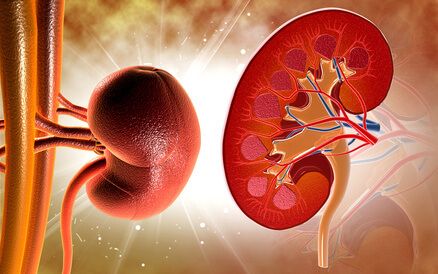Acute kidney injury (AKI) following acute coronary syndrome (ACS) is associated with prolonged hospital stay and worse prognosis at followup. However, serum creatinine level increase can either be transient or permanent. At present, retrospective studies show transient AKI patients present similar survival rate to patients with no AKI. The prognostic implications of transient and persistent AKI remain uncertain.

The aim of this sub-study was to assess transient vs. persistent AKI predictors and prognosis in ACS patients randomized to an invasive strategy for the multicenter MATRIX trial (Minimizing Adverse Hemorrhagic Events by Transradial Access Site and Systemic Implementation of Angiox).
Primary end point was major adverse cardiovascular events (MACE) at 30 days, defined as all cause death, AMI, stroke, and Net Adverse Cardiovascular Events (NACE) defined as the composite of MACE or BARCIII or V major bleeding.
Secondary end point included primary end point components and cardiovascular mortality, transient ischemic attack, and target vessel revascularization. It also included ischemic events and bleeding at one year.
Of a total 8201, AKI occurred in 16.3% of patients. 7.2% was transient and 9.1% persistent. Persistent AKI patients were older and mostly women.
Read also: One Year Prognosis of Atherosclerotic vs. Non-Atherosclerotic Lesions in MINOCA Patients.
When comparing no AKI patients against persistent AKI patients, the latter showed higher MACE rate at 30 days (P<0.001) and one year (P<0.001). They were also associated to higher cardiovascular mortality rate and bleeding BARC III or V at 30 days (P<0.001) and one year (P<0.001).
Transient AKI showed no differences in primary or secondary end points at 30 days but did show significant difference at one year as regards MACE (P=0.019) and all-cause and cardiovascular mortality (P=0.011).
After multivariable analysis, while there was no difference against transient AKI patients, persistent AKI patients had higher MACE rate vs. no AKI patients (P<0.001) as well as higher all-cause mortality (P<0.001) at 30 days.
Conclusion
Persistent AKI was associated to higher MACE and NACE rates at 30 days in patients with acute coronary syndrome undergoing invasive treatment. However, this difference was not observed in transient AKI patients.

Dr. Andrés Rodríguez.
Member of the editorial board of SOLACI.org.
Original Title: Transient vs In-Hospital Persistent Acute Kidney Injury in Patients With Acute Coronary Syndrome.
Reference: Antonio Landi, MD et al J Am Coll Cardiol Intv 2022.
Subscribe to our weekly newsletter
Get the latest scientific articles on interventional cardiology





